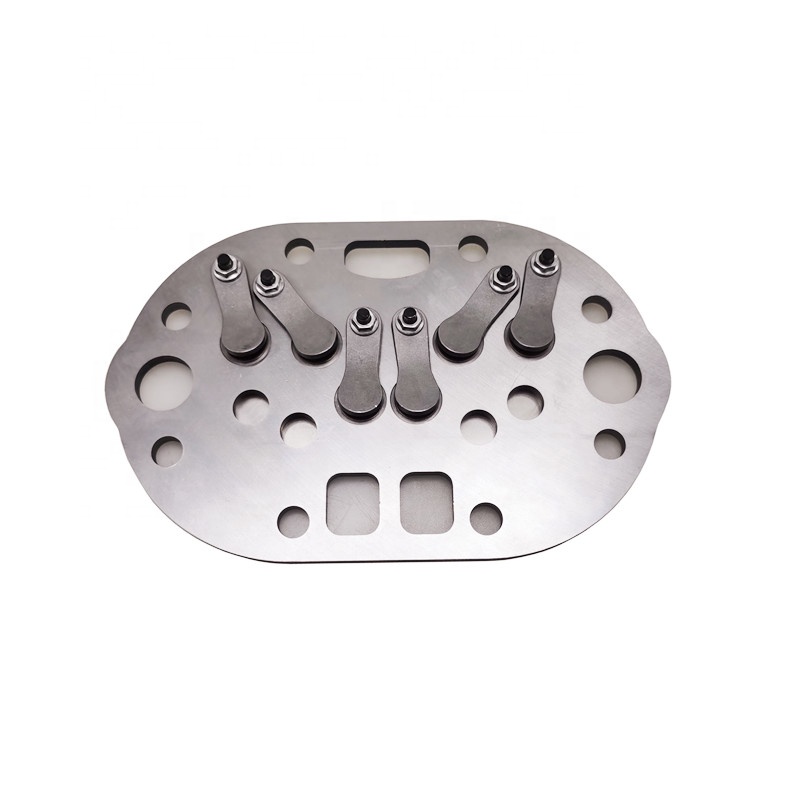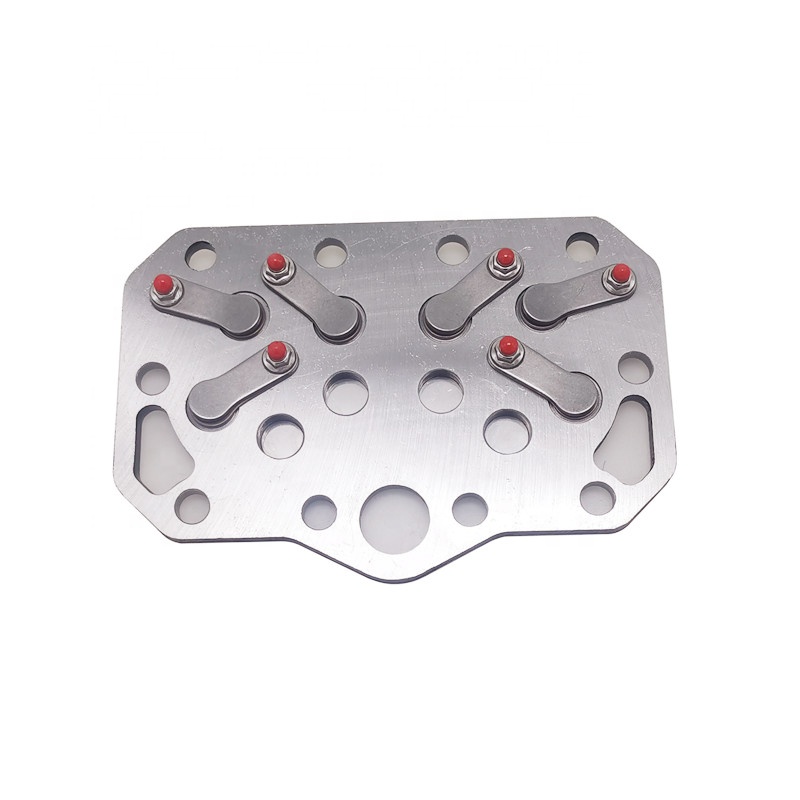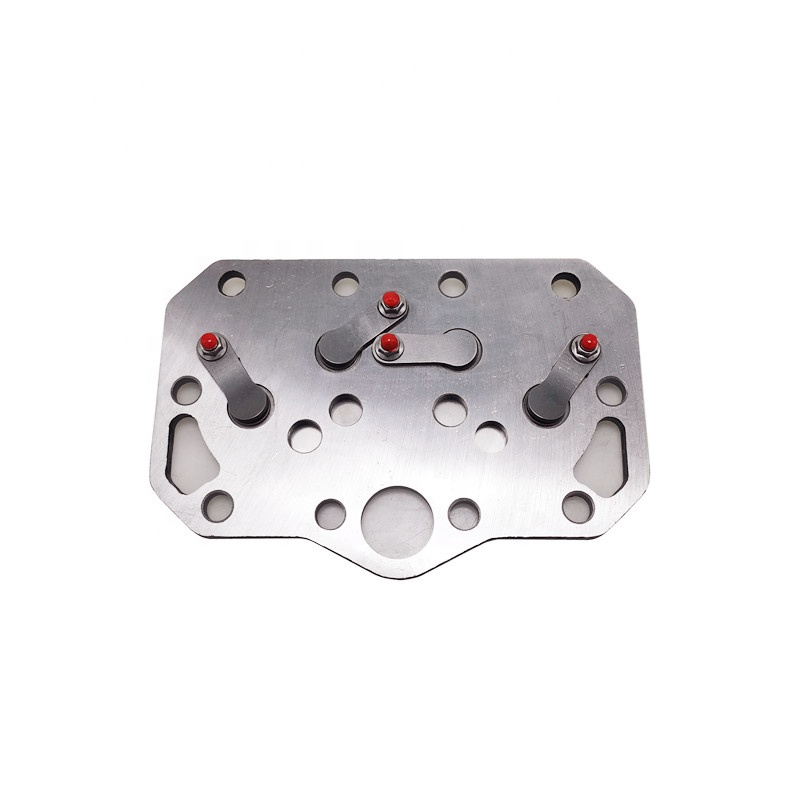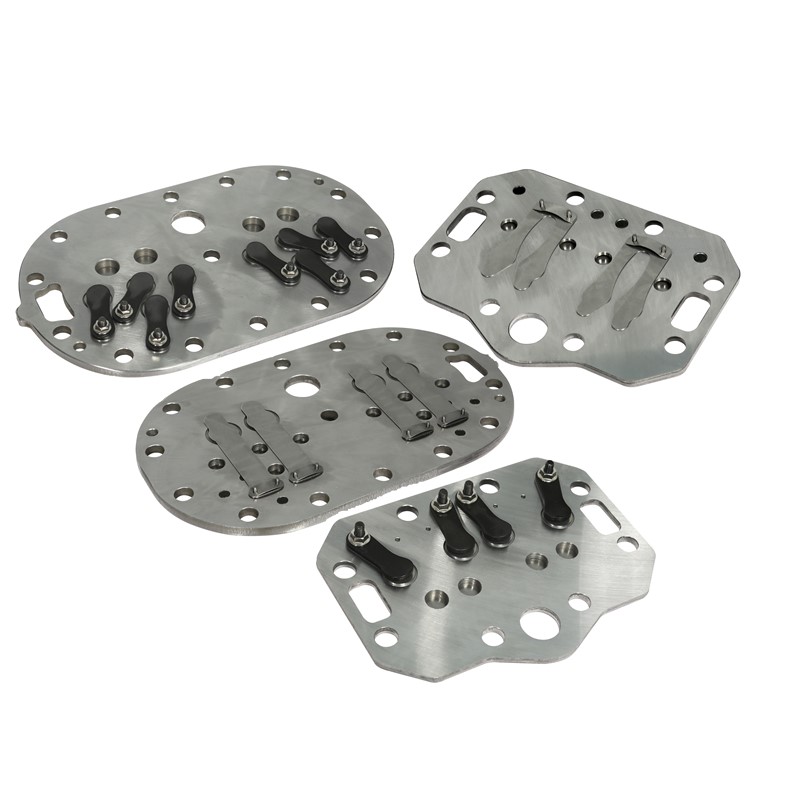
If you are looking for the Bitzer Compressor Valve Plate, you came to the right place. We are a Bitzer valve plate parts manufacturer and supplier of Bitzer compressors, and of course, we can provide high-quality Bitzer valve plates for your business!
You can find almost all Bitzer valve plate models on this page. Directly Contact us to get the Bitzer Valve Plates for your business.
As the wholesaler, we can provide a replacement complete Bitzer Valve Plate Assembly with suction valve reeds and discharge valve reeds. Any model of the Bitzer compressor valve plate you can see in the below list for your reference.
If you find there is not the model you need, just talk to us we will upload the correct model number of the Bitzer valve plate for you. We accept low ordering quantities. Contact us directly!
Best Quality, competitive price, enough model number!
The valve plate plays a critical role in a Bitzer reciprocating compressor. It is located between the compressor’s cylinder head and cylinder and is primarily responsible for controlling the intake and discharge of refrigerant gas, thus impacting the efficiency and performance of the compressor. Specifically, the role and influence of the Bitzer compressor valve plate in the compressor include the following aspects:

The valve plate in a Bitzer compressor regulates the intake and discharge of refrigerant gas by controlling the opening and closing of the suction and discharge valves.
The suction valve opens when the piston in the Bitzer compressor moves downward, allowing refrigerant gas to enter the cylinder. The discharge valve opens when the piston moves upward, releasing the compressed refrigerant gas from the cylinder.

The Bitzer compressor valve plate must have good airtightness to ensure that refrigerant does not leak when the compressor is not in operation. If the valve plate or the seals mounted on it wear out or become damaged, refrigerant leakage may occur, reducing the compressor’s efficiency.

The design and material selection of Bitzer compressor valve plate directly affect the compressor’s compression efficiency. If the opening and closing speed of the Bitzer valve plate is not fast enough or if it does not seal properly, it can lead to incomplete compression or reduced efficiency.
Additionally, if the valve plate is too thick, it will increase the compressor’s power consumption, while if it is too thin, it may become prone to damage.

Bitzer reciprocating compressors typically operate under high temperatures and pressure, so the valve plate must have high durability and reliability to withstand frequent mechanical impact and high-temperature corrosion over time.
If the valve plate in a Bitzer compressor fails, it will directly cause the compressor to stop functioning properly.

The design of the valve plate also affects the noise level of the compressor. A well-designed Bitzer compressor valve plate can reduce airflow impact and vibration, thereby lowering the operating noise of the compressor.
After prolonged operation, the Bitzer compressor valve plate may experience surface wear or corrosion due to airflow impact or impurities in the refrigerant.
Symptoms: Reduced compressor efficiency, diminished cooling performance, and potentially increased operating noise.
The Bitzer compressor valve plate may fail to open or close properly due to the accumulation of dust, oil, or impurities.
Symptoms: Abnormal compressor operating noise, airflow vibrations, and significant pressure fluctuations.
Failure of the seal between the Bitzer valve plate and valve seat may lead to gas leakage.
Symptoms: Reduced intake and exhaust efficiency, increased compressor load, and higher energy consumption.
Due to excessive pressure or temperature, the Bitzer compressor valve plate may bend, warp, or even crack.
Symptoms: The Bitzer reciprocating compressor may fail to build normal pressure, operate abnormally, or even stop functioning completely.

If the Bitzer compressor valve plate is sticking or switching sluggishly, you can first try removing the valve plate and cleaning it to remove oil, dust, or impurities left by the refrigerant. If necessary, use an appropriate lubricant to help restore the valve plate’s flexibility.
When you find that the valve plate is worn, deformed, or cracked, the best solution is to replace it with a new Bitzer compressor valve plate. Ensure that you use OEM or certified replacement parts to guarantee proper fit and quality.
If the Bitzer compressor valve plate itself is in good condition but the sealing is poor, you can replace the seals around the valve plate, such as O-rings or valve plate gaskets.
The Bitzer compressor valve plate has a limited service life, so it is recommended to perform regular maintenance on the compressor and periodically check the valve plate for wear. Additionally, regularly changing the lubrication oil and filters can reduce the wear on the valve plate caused by impurities.

MEDINO has been a leading manufacturer in refrigeration compressor parts field for 10+ years. With experience in electric terminal plates and oil crankcase heaters producing, we can provide high-quality terminal plates and all compressor parts to improve your compressor performance.
You can get a price of this model or send us any question to get any information you would like to know, we will reply to you soonest.